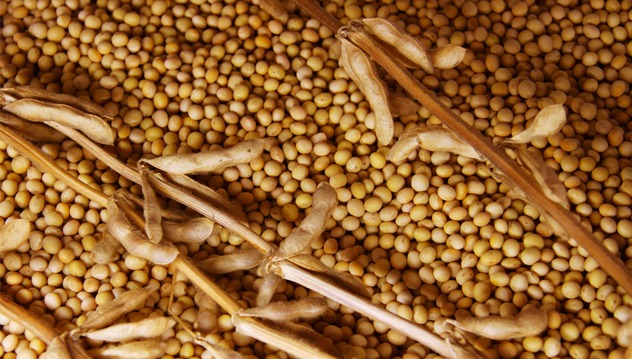The farming industry in the United States has been under considerable pressure as the gains of years' past were quickly washed away by modern technology and agronomy practices. The record prices achieved in soybeans just last year now seem like a lifetime ago to farmers who bought land and equipment based on the increasing average prices of corn, soybeans and wheat over the last decade. Today, we'll take a long-term look at the soybean market and see what has farmers so anxious to sell.
Every spring in the US, corn and soybeans battle it out in a fight for profitable acreage. Farmers assess their current balance sheets and attempt to determine their most profitable business plan for the coming season. Soybeans have rallied over 11% since April first while corn has only managed to climb around 8%. Soybeans have outpaced corn's gains due to the weather damage of the Argentinian crop and political discord in Brazil. Argentina has experienced tremendous rain damage and flooding. Officials there are expecting soybean production to decline by nearly 8%. Independent analysts have suggested their could easily be a decline of more than 10%. This is materially significant as Argentina is the world's third largest soybean producer behind the US and Brazil, respectively. Meanwhile, in Brazil, impeachment proceedings continue to ping pong the Real all over the place. This is making it hard on farmers to get their crops sold and/or obtain credit while also making purchases on the open market that much trickier due to currency, interest rate and legal considerations amid a coup/revolution.
Now that we've outlined the broad-brush strokes of the market, let's look at the soybean chart in detail. The commercial traders are the ones who grow the crop or use the crop. The large speculators are just that, speculators. Our thesis is that no one knows a market better than those who rely on it for their living. We take it several steps further, beginning with the notion that while any producer or consumer can be foolish, rarely is that behavior reflected in the trading groups' activity. Thus, we track most closely the commercial trader category while also looking for markets that have become imbalanced due to the discrepancy between the commercial traders and large speculators as these are the largest groups in the markets.
We've numbered the important points on the chart and we'll now discuss them in order.

One, commercial traders in the US can turn a profit, collectively with beans over $9. This can be seen by the increased pace of their selling as the market began to rally. Also note that the more the market has rallied, the more forward contracts farmers have hedged. This provided keen insight into their expectations as beans now priced over $10 per bushel have brought about the largest net short position in nearly two years.
Two, the commercial total position continues to grow as the producers continue to sell. This is the galvanization of commercial consensus as more and more farmers collectively agree that they can make good money having sold soybeans above $10 per bushel. Commercial traders have now set a record total position, holding more than 900,000 total contracts.
Three, large speculators have been watching the grain market build a base since last fall and as usual, they jumped on the spring planting fear rally. This has led to the largest speculatively bullish position since May 23rd of 2014 when beans made their last major high near $13.50 per bushel. As usual, the speculators have their largest position on at the most inopportune moment.
Four, the large speculator position continues to grow on this rally. The market really extended its gains over the last week. However, these gains have come on some troubling signs. Open interest has declined by more than 10% over the last week in the face of a growing large speculator position. The last time the large speculator position was this big was in June of last year. The market ended up peaking less than three weeks later and has been lower ever since.
 We see the current soybean situation as a classic case of speculative hopes being thwarted by professional realities. While speculators may be dreaming of, "Beans in the teens" the commercial traders are far more content to lock in the extra bonus this recent rally has provided for them. We'll continue to base our trading on what's expected rather than what could happen. Siding with the commercial traders leaves us looking for a rally to sell against the $10.50 resistance. We'll wait for the actual signals generated by our Commitments of Traders mechanical and discretionary programs to trigger short trades as we expect the commercial traders' record position to overwhelm the large specs and the soybean market to return to the $9 base from which it sprung.
We see the current soybean situation as a classic case of speculative hopes being thwarted by professional realities. While speculators may be dreaming of, "Beans in the teens" the commercial traders are far more content to lock in the extra bonus this recent rally has provided for them. We'll continue to base our trading on what's expected rather than what could happen. Siding with the commercial traders leaves us looking for a rally to sell against the $10.50 resistance. We'll wait for the actual signals generated by our Commitments of Traders mechanical and discretionary programs to trigger short trades as we expect the commercial traders' record position to overwhelm the large specs and the soybean market to return to the $9 base from which it sprung.






